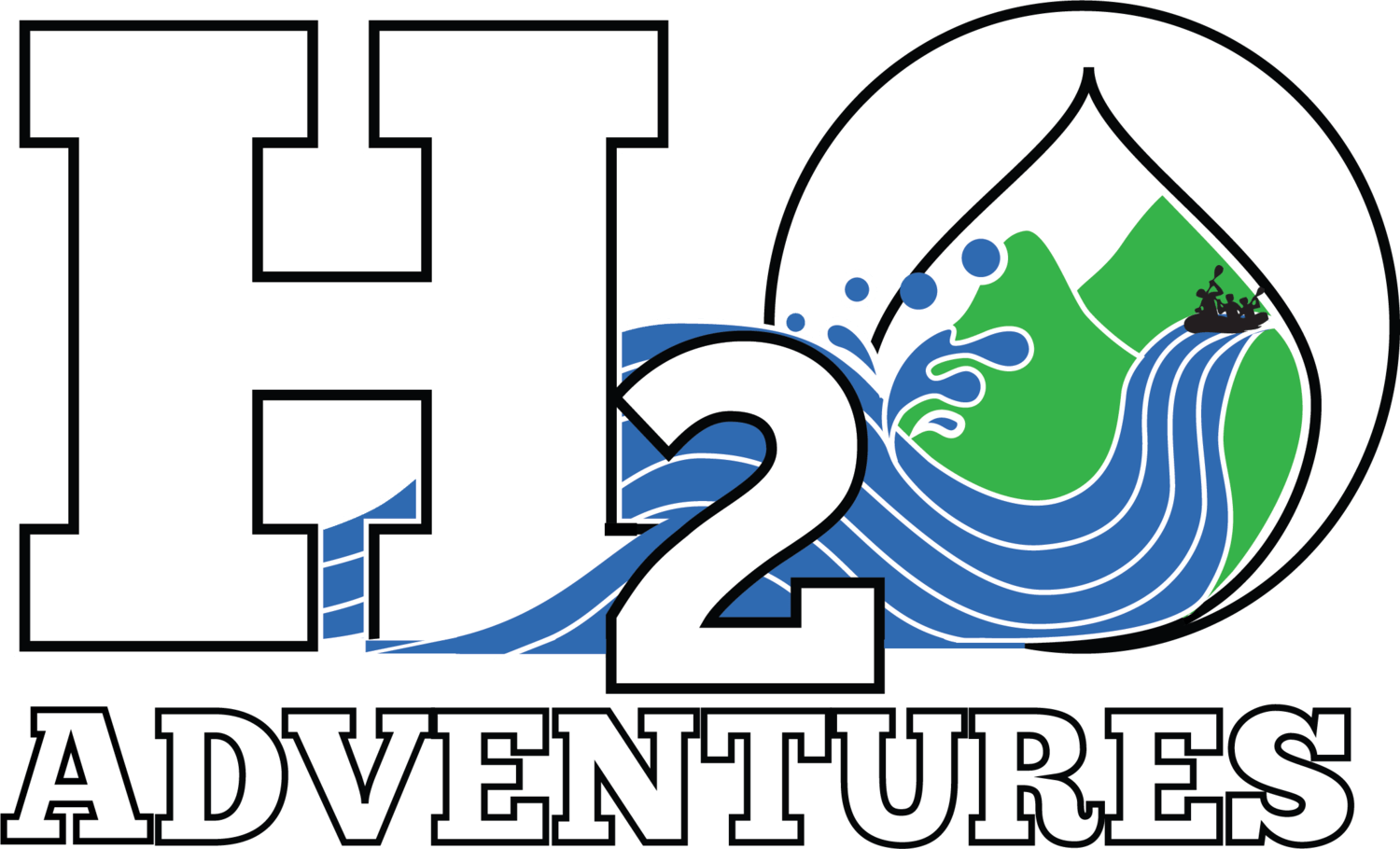How Difficult are Class 4 Rapids?
We all want to get out on the river for some rafting adventure, but when different rivers are classified from 1 to 2 all the way up to 6, it may be hard to know what those rapid classes really mean and how difficult those rapids can be.
At H20 Adventures, we regularly run rapids in the Class 4 rapids range, and we know how to keep everyone prepared and safe, but that doesn’t mean that these Class 4 rapids can’t be difficult and present significant challenges to even experienced whitewater rafters. So what do the classifications of rapids mean, and how do you know if Class 4 rapids are too difficult for you and your group--or if they’re the perfect challenge.
Whitewater Rapids Classes
Class 1 Rapids: Easy
Class 1 rapids involve fast moving water with small waves and a few obstructions. But the obstructions are all easily avoidable, even with little training. The risk to swimmers, if you fall from the raft, is small, and it’s fairly easy to self-rescue (meaning you can get out of your predicament without help from others in the boat).
Class 2 Rapids: Novice
Class 2 rapids are faster and bumpier, but they have wide channels that don’t require prior scouting before going down. It may require that the rafters need to paddle a bit to maneuver the raft to avoid obstacles or big splashes, but all rocks should be easily avoided. It is very rare for swimmers to need assistance if they fall from the raft--especially if they’re wearing the proper gear, including life jackets and helmets--and self-rescue is generally pretty easy.
Class 3 Rapids: Intermediate
Class 3 rapids are harder still, but with a little know-how and experience--and especially with a river rafting guide--you’ll be able to navigate the larger rocks, drop-offs, and obstacles. There may be strong eddies and currents that require some hard paddling by the people in the raft. If you’ve never rafted this particular Class 3 rapid area before, you may want to do some scouting beforehand. Injuries are rare, and self-rescue is common, but help from people in the raft is often needed or else the overboard rafter may be taking a long trek down the river floating with their life vest.
Class 4 Rapids: Advanced
With Class 4 rapids you can expect an intense bumpy ride that will need the full crew of the boat to be following commands to paddle the right course. There may be unavoidable obstacles or waves, and an experienced guide is a must. There will be rapids with “must make” maneuvers that you need to be aware of, which will require a knowledge of the river, either through previous rafting or through scouting. If a rider is tossed from the boat there is a possibility of danger and injury, and self-rescue can be difficult--the group in the boat will be needed to rescue the floating rafter from the turbulent waves.
Class 5 Rapids: Expert
Class 5 rapids are everything that you’d expect in a Class 4 rapid, except for much longer stretches with little chance for a break, and the bumps, waves and obstacles are more dangerous and violent. There may be large unavoidable drops and chutes that require all your experience and practice. There is imminent danger if thrown from the raft, and rescue can be difficult even for experienced rafting crews.
Class 6 Rapids: Extreme
Class 6 rapids are almost never run by anyone except experts and the occasional exploratory expedition. Danger is extreme and the consequences of errors can be dire. Rescue can be impossible.
How Do You Prepare for Class 4 Rapids?
Preparing for the Class 4 Rapids
Before you go down Class 4 rapids in whitewater rafting, you should get a thorough briefing from the crew leader on the whitewater rafting team. All members of the rafting crew should understand the paddling instructions and know how to follow the commands of the leader. This briefing should give you safety instructions telling you where and how to handle rescue situations.
Getting Out on the Water
Class 4 rapids are exhilarating and exciting, but can also be scary. There’s no doubt that when you’re going down a Class 4 rapid you care going to be feeling a mix of emotions that range from terror to delight--sometimes both at the same time. The experience will be a mix between hard work--paddling hard and fast to get through a rough patch--and simply holding on and letting the river take you down its wavy and bumpy course.
Most of the time in Class 4 rapids you will be paddling, following the directions of your whitewater rafting guide. It may seem like the paddling that you’re doing will be almost impossibly useless against the pull of the water and the buffeting of the waves, but be assured that the paddling is essential to the safe navigation of a Class 4 rapid.
Class 4 Rapids are Difficult But Exhilarating
So yes, Class 4 rapids are indeed difficult and they will take a considerable amount of strength and stamina. You will get bounced and rocked and soaked, but if you follow the directions of your guide and remember your safety protocols, you will have a wonderful time.

